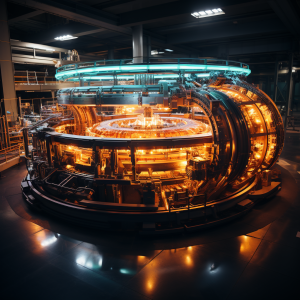
What is a Bose-Einstein condensate, and what are its unique properties?
Introduction
The Bose-Einstein condensate (BEC) is a remarkable state of matter that exists at extremely low temperatures near absolute zero. First predicted by Satyendra Nath Bose and Albert Einstein in the 1920s and experimentally realized by Eric Cornell and Carl Wieman in 1995, BECs represent a unique platform for exploring quantum phenomena and offer potential applications in fields such as quantum computing and precision measurements.
Bose-Einstein Statistics and Condensation
To understand BECs, it is necessary to grasp the concept of quantum statistics. Particles in quantum physics are classified as either fermions or bosons. Fermions follow the Pauli exclusion principle, which stipulates that no two fermions can occupy the same quantum state simultaneously. On the other hand, bosons obey Bose-Einstein statistics, allowing multiple bosons to occupy the same state without restrictions.
When a gas of bosonic particles is cooled to extremely low temperatures, the thermal de Broglie wavelength of the particles begins to overlap, and a macroscopic number of particles “condense” into the lowest energy state available. This phase transition gives rise to the formation of a BEC, where a significant number of particles behave collectively as a single quantum entity.
Unique Properties of BECs
Macroscopic Quantum State
A BEC represents a macroscopic collection of particles that act as a single coherent quantum state. Despite their large numbers, the particles exhibit quantum mechanical properties, including coherence and interference, on a scale typically reserved for microscopic systems.
Superfluidity
BECs exhibit superfluid behavior, which refers to the ability of the particles to flow without experiencing any viscosity. This property allows for frictionless motion and enables intriguing phenomena such as the circulation of a BEC trapped in a ring-shaped configuration.
Vortices
In rotating BECs, quantized vortices can form. These vortices are tiny tornado-like structures characterized by regions with zero condensate density. The presence and behavior of these vortices shed light on quantum fluid dynamics and provide insights into the fundamental nature of quantum systems.
Matter Wave Interference
When two BECs overlap, they display interference patterns akin to those observed in waves like light. This phenomenon directly demonstrates the wave-like nature of matter, as predicted by quantum mechanics.
Tunable Interactions
The interactions between particles in a BEC can be precisely controlled and modified using a technique called Feshbach resonance. This provides the ability to study a wide range of interaction regimes, from non-interacting to strongly interacting, within the same experimental setup.
Slow Light
Light pulses passing through a BEC can be significantly slowed down, and even temporarily halted, while their information remains preserved. This capability has potential applications in quantum communication and computing, where precise control over light propagation is vital.
Conclusion
Bose-Einstein condensates offer a unique window into the realm of quantum mechanics and have the potential to revolutionize various areas of physics. By investigating the behavior of particles in this exotic state of matter, scientists can delve into quantum phenomena that were previously inaccessible. Moreover, with ongoing research, it is expected that BECs will continue to unveil new and intriguing properties, driving advances in quantum technologies and further expanding our understanding of the fundamental nature of the universe.




